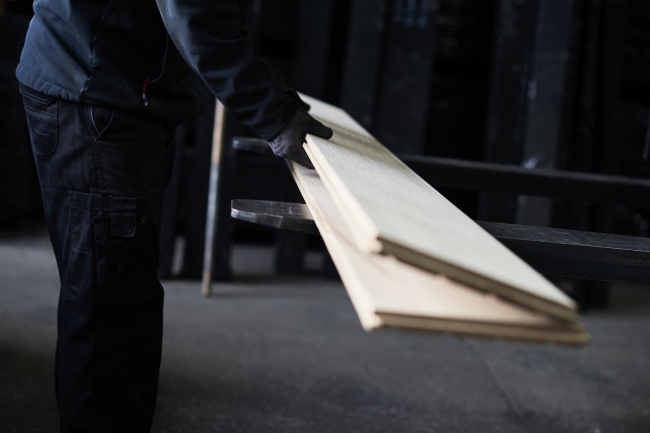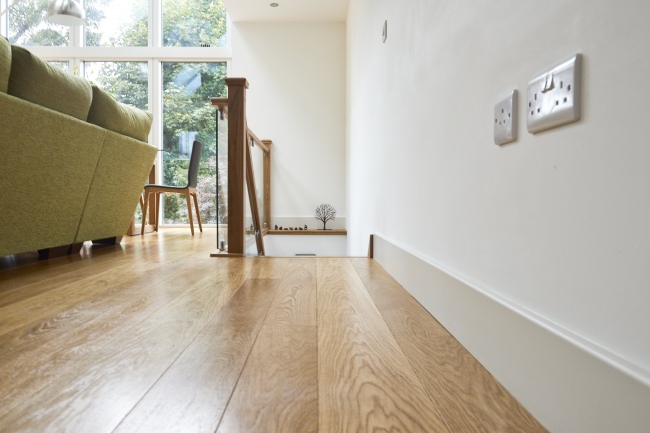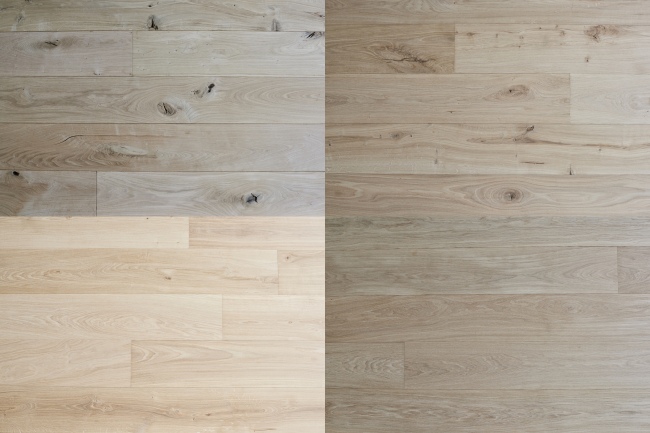From No Oak Floor To New Oak Floor...
17th Aug 2018
There is no doubt that the oak flooring market can be a minefield. So much so, it can be difficult to know to where to even begin in your search. With this in mind we have created this short blog post showing the key points to consider on your search for oak flooring...
Perhaps the first place to start, to is to decide whether solid or engineered oak flooring is best suited for your environment. Solid oak flooring boards consist 100% of solid oak. Engineered oak flooring on the other hand is a combination of solid oak and a plyboard base.
Typically solid oak flooring is used for what can be described as "traditional" areas. Thinner boarded solid oak flooring (such as our 14mm thick boards) can be laid over timber. Thicker boarded solid oak flooring (such as our 20mm) can also be laid over timber subfoors as well as over joists/battens.

Engineered oak flooring can be laid in the same environments as solid oak flooring. Engineered oak flooring boards also have the ability to be glued to concrete subfloors, laid over underfloor heating systems and even laid as floating floors.
The chosen width of board can also influence whether you opt for solid or engineered oak flooring. Typically solid oak flooring is laid using the secret fixing method. This involves driving a screw or nail through the tongue of the board at a 45 degree angle, into the joists or subfloor below. For solid oak boards that are wider than 160mm we recommend surface fixing in addition to secret fixing. Surface fixing is either screwing through the surface and covering with an oak plug or inserting a traditional floor brad through the surface of the board. For engineered oak boards this surface fixing process would not be required.

Regardless of the fitting implications, what width is right for you is also very much a case of personal preference - whether you prefer wider boards, narrower boards or somewhere in-between. The size of the room can also influence this decision. Wider boards are often used in larger spaces, whilst narrower boards are often used in smaller spaces.
With the type of oak flooring decided, our next recommendation would be too decide upon the grade of oak flooring you require. Essentially the grade refers to the amount of knots and character in the board. Many companies use different names to refer to each grade. The choice generally ranges from plenty of knots and cracks to very clean with no knots. There are also a number of options in-between.

Next up is the colour, where the list of possible colours is endless. Oak flooring will either come in a prefinished state or an unfinished state.
Prefinished boards are what you see is what you get -where the boards are laid without further treatment needed. The colour you see when purchasing prefinished boards is the final colour your oak floor will be once laid.
Unfinished oak flooring are boards which are laid first, and finished afterwards. There are a huge number of different finishing products on the market - whether you want light or dark oak flooring. Due to its ease of application and range of colours, one the of the main finishes we supply is the Blanchon Hard Waxoil (available in greys, whites, browns, black and golden finishes). The great advantage of unfinished boards is the ability to repair and recoat (if required) much easier further down the line.
You now have all of the necessary information to find your perfect oak floor. If you would however like to discuss any aspects of the above with us further - give us a call on 01538 304584.




Add a comment